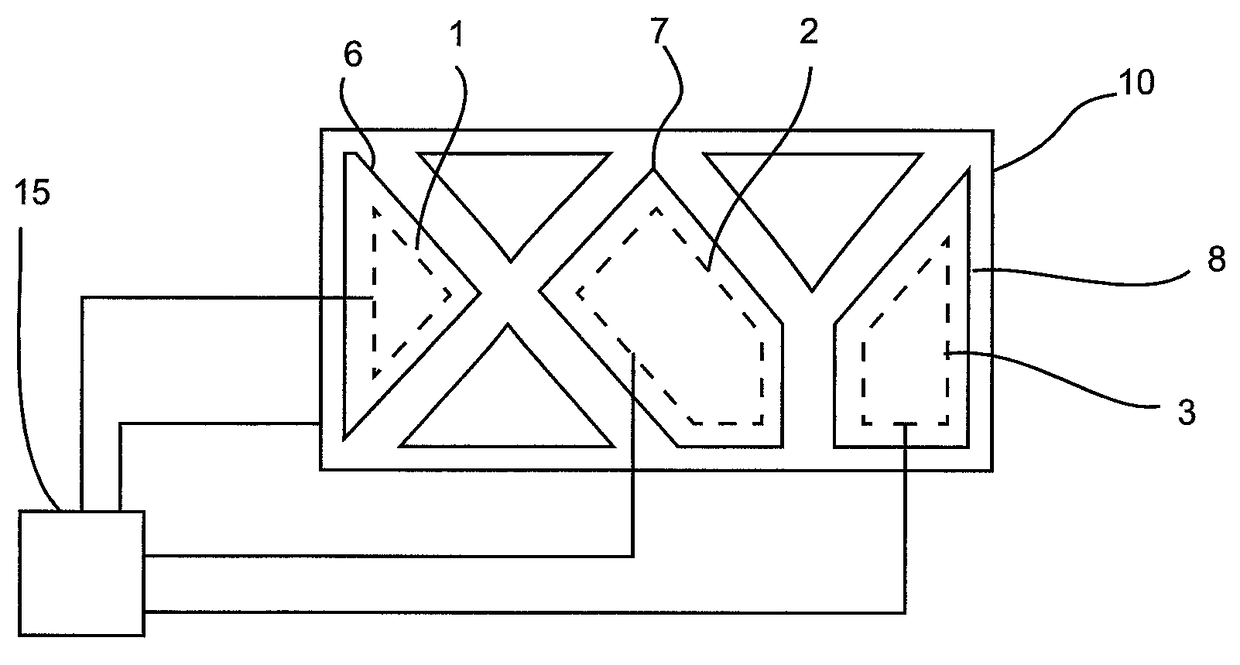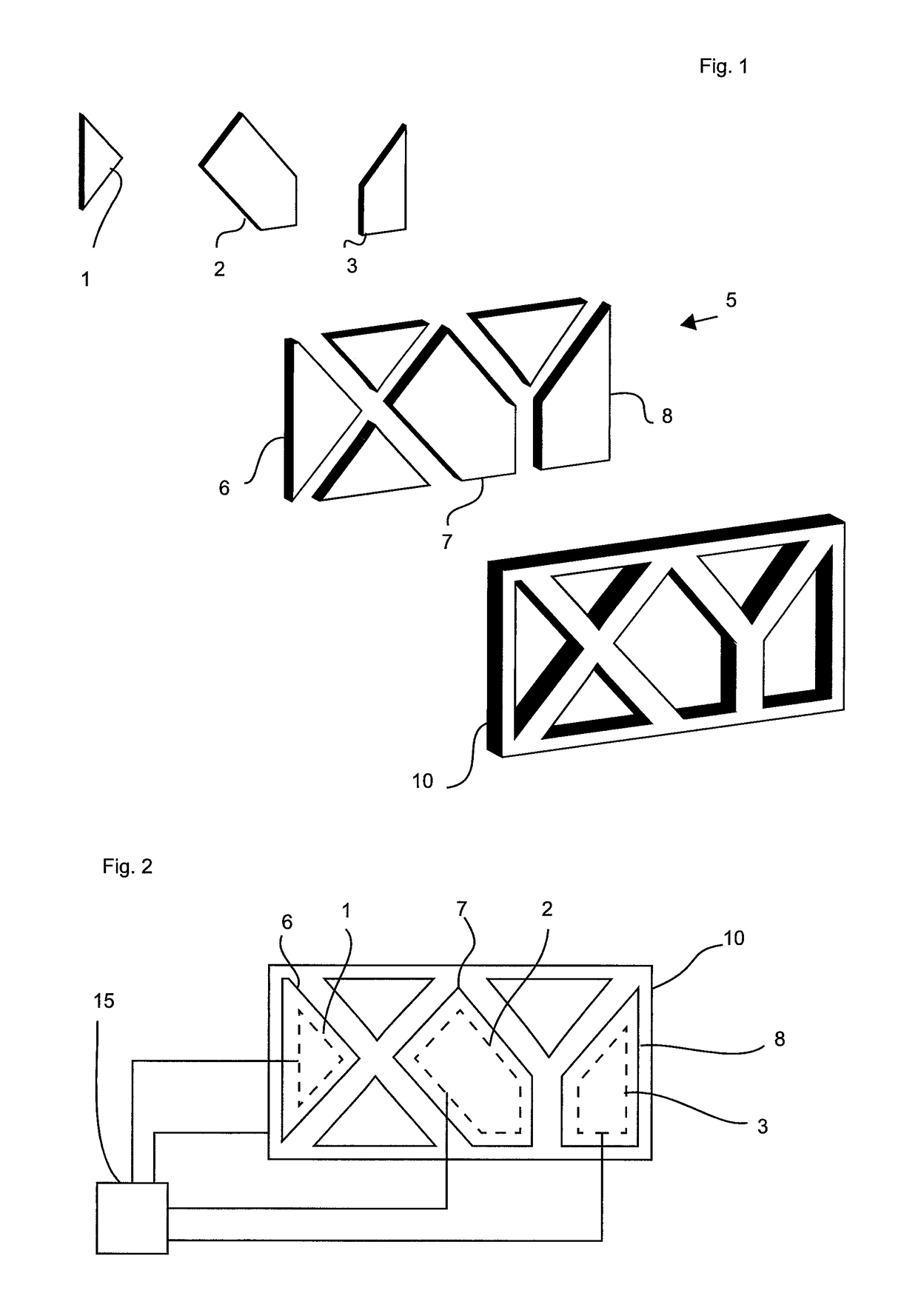Operating device for motor vehicles
a technology for operating devices and motor vehicles, applied in the direction of electronic switching, pulse technique, construction, etc., can solve the problems of problematic arrangement and positioning of such sensor assemblies on the vehicl
- Summary
- Abstract
- Description
- Claims
- Application Information
AI Technical Summary
Benefits of technology
Problems solved by technology
Method used
Image
Examples
Embodiment Construction
[0030]Three differently shaped sensor electrode sections 1, 2, 3 are depicted in FIG. 1. These sensor electrodes are formed from a metallic plate. Numerous electrically insulating plastic covers 5 are shown. It can be seen that the sensor electrodes 1, 2, 3 are adapted to the shape of the plastic covers 6, 7 and 8, respectively. The sensors electrodes 1, 2, 3 are smaller thereby, such that edge areas remain exposed in each case, when the sensor electrodes are disposed beneath the plastic covers. The plastic covers thus overlap the sensor electrodes at all sides. A metallic separating device 10 is adapted in terms of its shape to the plastic parts 5, such that the plastic parts act as inserts in the empty spaces in the metallic cover 10. When the electrodes 1, 2, 3 are placed behind the respective plastic covers 6, 7 and 8, they are then separated on all sides from the metallic separating device 10. The metallic separating device 10 is designed as an emblem for a vehicle manufacturer...
PUM
 Login to view more
Login to view more Abstract
Description
Claims
Application Information
 Login to view more
Login to view more - R&D Engineer
- R&D Manager
- IP Professional
- Industry Leading Data Capabilities
- Powerful AI technology
- Patent DNA Extraction
Browse by: Latest US Patents, China's latest patents, Technical Efficacy Thesaurus, Application Domain, Technology Topic.
© 2024 PatSnap. All rights reserved.Legal|Privacy policy|Modern Slavery Act Transparency Statement|Sitemap


